Unique food trails: Ming Tan sniffs out Mongolia's meat markets
Advertisement
Experiences
Unique food trails: Ming Tan sniffs out Mongolia's meat markets
While in the Mongolian capital letter for business organisation, Chef Ming Tan of Jam at Siri House got more than than what he signed up for.
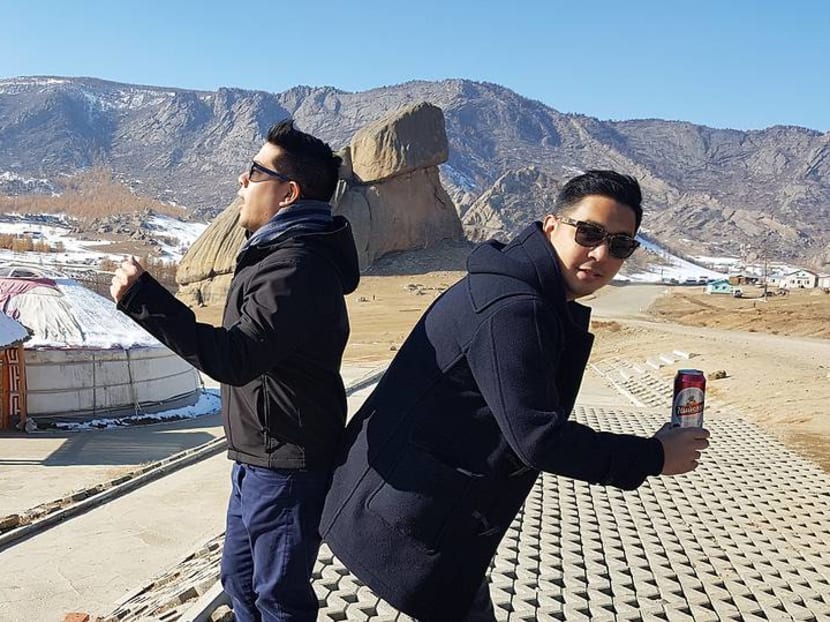
Ming Tan and his best friend Justin Chow went to Mongolia to exam a burger pop-upward brand. (Photos: Ming Tan)
09 Apr 2022 06:30AM (Updated: 04 Jul 2022 03:58PM)
When Ming Tan and his best friend Justin Chow went to Ulaanbaatar in October 2022 to test-run a burger pop-upwards brand in a city buffet and melt a loftier-terminate private meal for a client, they wondered, at times, if they had bitten off more than they could chew.
Tan, who is currently the executive chef of Jam at Siri Business firm, and Chow, chief marketing officer of digital healthcare provider Whitecoat Gobal and co-founder of private investment platform Fundnel, had to understand the Mongolian F&B supply concatenation, visit markets for produce, and source ingredients through various fixers – and information technology was their first visit to the land.
Fortunately, the duo was well taken care of past their clients, who hosted them for meals and brought them to well-known restaurants, subconscious spaces and late dark karaoke joints.

Among them was Hana Sushi at Monnis Tower, the private eatery of a Mongolian tycoon that was helmed by a Tokyo chef and served "loftier quality Japanese nutrient, astonishing fish and great tasting sushi rice".
Popular Rosewood Kitchen + Enoteca lived up to its highly-ranked reputation on Tripadvisor with its hearty European dishes made mostly from scratch from good quality local ingredients. Information technology also ran a grocery shop selling freshly broiled bagels and all kinds of local meat.
READ> Keong Saik's latest dining destination: Pasta, craft beers and an elBulli chef
And at what Tan regards as "probably the best Due south Asian eatery in Ulaanbaatar", the always-crowded Namaste scored total marks for its freshly cooked naan and hot curries at accurate spice levels.
But the one item that stole Tan'southward breadbasket was the ubiquitous Mongolian dumpling khuushuur – deep-fried back-scratch puffs stuffed with chives and spiced pork, lamb or beefiness – that was found in every bar, eating house, and shop that Tan and Chow visited.
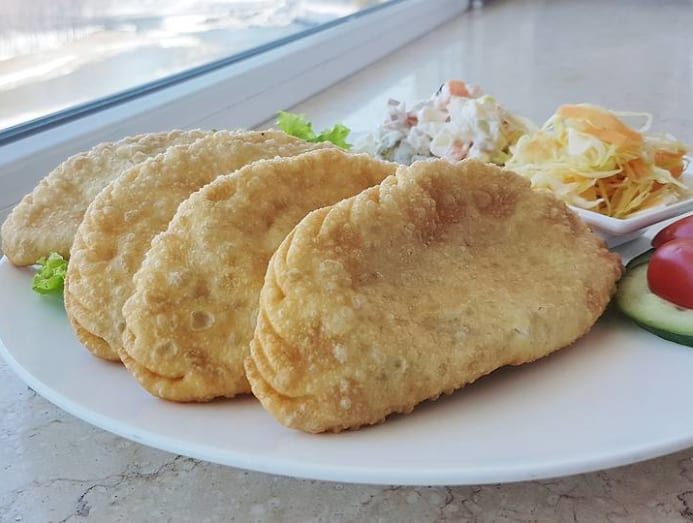
Tan says, "Some were small, like the size of an egg, and others nearly the dimension of a modern smartphone. Whether I was cold, drunk, hungry or full, awake or half-comatose, every khuushuur I consumed was offered with a grinning, served piping hot and tasted damn succulent. In my mind information technology is the best representation of a Mongolian dish."
Ironically it was the work part that supplied all the fun. 1 of their liaisons in Ulaanbaatar was heavily tattooed and pierced Chef Mars, who, together with their driver Tumurr, a large center-anile human being with broad shoulders, huge hands and a beer abdomen, took the pair to diverse places to buy their appurtenances.
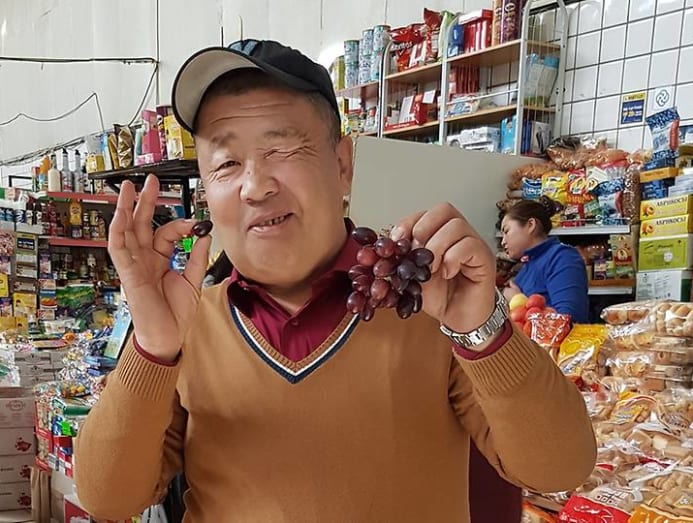
In one nondescript warehouse filled with Japanese and Korean products, Tan found himself confounded by butter, milk, cheese, and cured meats wrapped in packaging covered in Cyrillic script. He said with amusement, "Information technology was a goldmine for the curious foodie or chef, but hell for someone trying to cook with these ingredients."
In another warehouse advertising "imported foreign goods", boxes of pasta and cereal were stacked perilously loftier next to jars of pickles, jams, and anchovies, while imitation caviar in glass jars sit beside local cheeses bobbing in murky whey.
"The hall lacked the squawk and cackle of a busy hub of substitution," recalled Tan. "I could but as easily be buying armament and Kevlar kneepads equally I am looking for mayonnaise here."
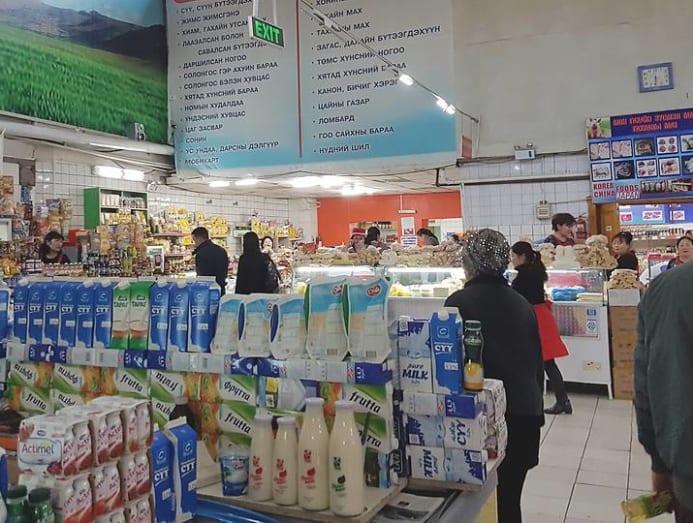
Topping the weird and wonderful list was Huchit Shonhor wholesale meat marketplace, a popular identify that was somehow constantly referred past Tan's fixers every bit a "black market". He later found out that not all the meat in the marketplace was institutionally inspected; a good half was sold via trading with nomadic herders with the meat slaughtered at an slaughterhouse but behind the marketplace.
The cluster of squarish single-storey buildings was located away from the city middle, and each edifice housed around 20 meat sellers, each manning open food chillers displaying various cuts of beef, lamb and camel, with some camel tomahawk steak cuts as large equally a pocket-sized adult.

Tan found the identify surprisingly make clean. Cypher was wet due to the ambient temperature of one degree Celsius. "There was no signs of rot, no whiff of funk. Just a constant, very noticeable meatiness coupled with the smell of cattle, like a very buttery-smelling zoo."
The vendors, generally stern-looking women dressed in uniforms with matching Mos Burger-style caps, presided over their chillers, which had cards with prices scrawled on them. One yelled at Tan when he took one photograph as well many. "I accept only felt similar shame bumping into fishmongers in Tsukiji and touching lobsters without permission in Noryangjin."
What was even more astonishing was the cost. Well marbled, plump and boneless shortrib slabs were retailing for under Due south$3 a kilo and nothing was "dripping or flabby except from the beef fur that needs to exist removed prior to cooking".
READ> The silky deliciousness of fresh pasta – and where to get your fix in Singapore
With fall temperatures hovering at null degrees Celsius all day, everything was packed swiftly, without wrapping, into plastic bags. Every customer was shouldering a carcass of some kind, exist it an unabridged lamb or the legs of a moo-cow. Tan even saw someone nonchalantly throw a lamb carcass into the boot of a large BMW X5 earlier driving away.
"We paid what seems to be a ridiculously depression amount for whole primal cuts of beef to grind for our burgers," said Tan. "The patties nosotros fabricated from them were phenomenally tasty, with a rounded beefiness that I still remember clear as day."
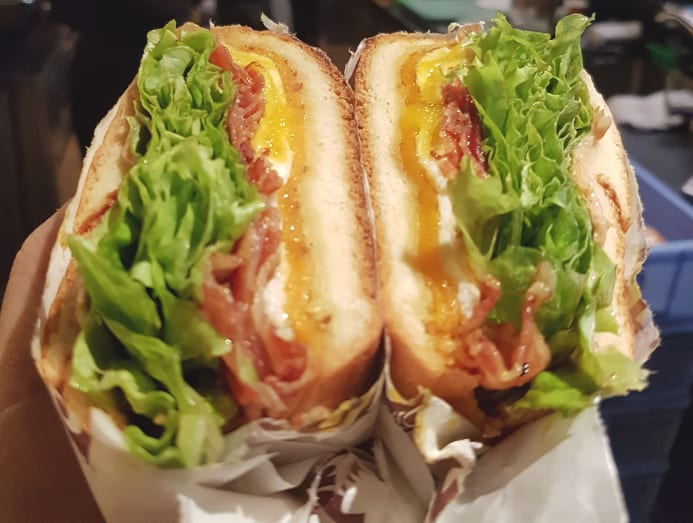
All these local interactions precisely brand up what Tan feels food should be nearly: people.
He said, "A memorable food journey should include experiences of how locals buy, cook and eat their nutrient. I honey visiting places near food markets, where you can often find a thriving economy of kitchenware shops, and I get fascinated learning how nutrient is grown and gets into someone'southward mouth."
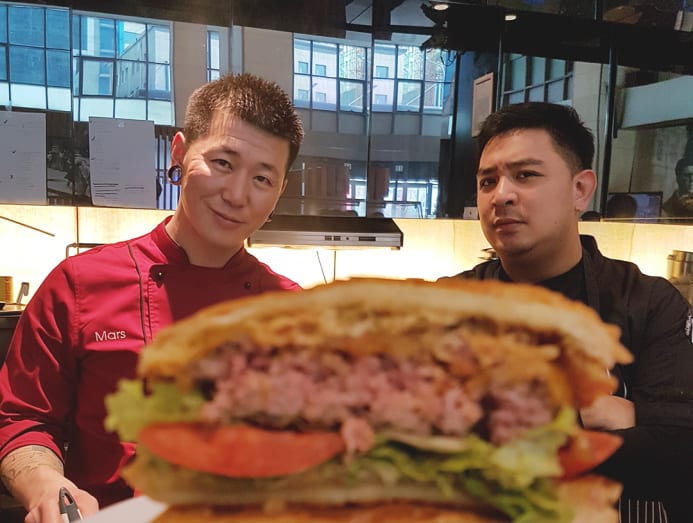
Source: https://cnalifestyle.channelnewsasia.com/experiences/chef-ming-tan-jam-at-siri-house-mongolia-burger-pop-up-239331
0 Response to "Unique food trails: Ming Tan sniffs out Mongolia's meat markets"
Enviar um comentário